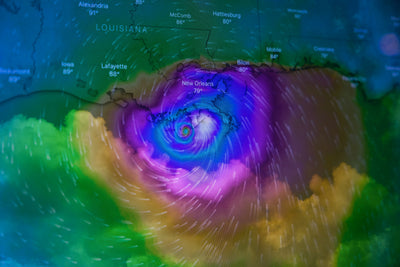Introduction
As a dog owner, it's always heartbreaking to see a beloved fur child shivering, barking excessively, or destroying furniture due to anxiety. Whether it's separation anxiety, fear of noise, or post-surgical recovery nerves, anxiety in dogs not only affects their quality of life, but also makes owners feel helpless. Fortunately, Trazodone, a safe and effective medication, is emerging as a powerful aid in relieving anxiety in dogs. In this article, we will provide you with a detailed analysis of the principles, usage scenarios, dosage, precautions, and alternatives of Trazodone to help you better provide comfort and calmness to your beloved pet.
Trazodone for Dog Anxiety: How It Works to Calm Your Canine
1. What is Trazodone? How it Helps Dogs Relax
Trazodone is an antidepressant originally developed for humans and is a 5-hydroxytryptamine antagonist and reuptake inhibitor (SARI). It brings about a calming and relaxing effect by regulating serotonin levels in your dog's brain. Serotonin is a key neurotransmitter that is linked to mood stability, sleep quality, and a sense of well-being.Trazodone's dual mechanism of action involves blocking certain serotonin receptors (antagonism), as well as inhibiting the reuptake of serotonin (similar to the selective serotonin reuptake inhibitors, SSRIs, but by a different pathway). This mechanism increases the amount of serotonin available in the brain, allowing dogs to be calmer and more relaxed in the face of stress, relieving the restlessness associated with anxiety.
2. Scenarios for Trazodone: Bringing Moments of Calm to Dogs
Trazodone performs well in a variety of anxiety-related scenarios, helping dogs cope with stress and regain comfort. Below are a few common scenarios of use:
(1) Separation Anxiety
Many dogs exhibit separation anxiety when their owners are away, such as incessant barking, chewing on furniture or even self-injury.Trazodone can be used as a supplemental medication to help keep dogs calm when they are alone. Veterinarians often recommend combining Trazodone with behavioral training, such as gradually increasing the amount of time alone or using positive reinforcement, to radically improve your dog's anxiety.
(2) Noise phobia
Thunder, fireworks, or vacuum cleaner noises can make dogs cower in fear.Trazodone can be given 1-2 hours before an anticipated noise event to help ease the dog's fear. The medication usually takes effect 1-2 hours after administration and the calming effect lasts for 4-8 hours, providing your dog with a period of calm.
(3) Post-operative recovery
Dogs after surgery are often nervous and uneasy due to pain or changes in environment. Trazodone's sedative effect can help them relax and promote a smoother recovery process, especially suitable for the recovery period of surgery that requires restriction of activities.
3. Dosage and Administration of Trazodone: Scientific Dosing, Safety First
(1) Dosage
The dosage of Trazodone should be precisely determined by your veterinarian according to your dog's weight and anxiety level. The general range is 1-5 mg per kilogram of body weight. Mildly anxious dogs can be started on a low dose (1-2 mg/kg) and higher doses (3-5 mg/kg) may be required for severe anxiety. Do not adjust the dose on your own, as overdose may trigger side effects, while underdose may not be effective.
(2) Method of administration
Trazodone can be taken with food or on an empty stomach, but consistency is required to ensure consistent absorption. The drug is usually supplied in tablet form and may be fed whole or crushed and mixed into food with veterinary permission. For predictable anxiety events such as thunderstorms, veterinary visits, etc., it is recommended that the medication be given 1-2 hours in advance to allow sufficient time for the medication to take effect. Owners need to closely monitor their dog's response and communicate regularly with their veterinarian to adjust the regimen.
4. Potential Side Effects: Understanding and Responding in a Timely Manner
Trazodone is usually well tolerated, but may still cause some side effects, including lethargy, vomiting, diarrhea, changes in appetite, or in a few cases, disturbed behavior. Drowsiness is the most common side effect and is usually not a cause for concern, but if your dog develops extreme lethargy, difficulty breathing, or persistent digestive discomfort, you should contact your veterinarian immediately. Owners need to closely monitor their dog's reaction to the medication to ensure safe use.
5. Storage and Precautions: Careful Use of Medicines to Protect Health
(1) Storage
Trazodone should be stored in a dry, light-proof environment at 20-25°C. Short-term exposure to 15-30°C is acceptable. Ensure that the drug is kept out of the reach of children and pets to avoid accidental ingestion.
(2) Precautions
Contraindications: Trazodone is contraindicated in dogs that are allergic to Trazodone. Use with caution in dogs with heart disease, liver disease, kidney disease, or closed-angle glaucoma, to be determined after veterinary evaluation.
DRUG INTERACTIONS: Trazodone may interact with other medications or supplements, such as antidepressants or tranquilizers. A complete list of your dog's medications should be provided to your veterinarian prior to use.
Risks of Long-Term Use: Prolonged use may lead to tolerance, requiring higher doses to maintain effects. Your veterinarian may recommend intermittent use or a combination of other therapies to reduce dependence.
6. Alternatives to Trazodone: More Choices, More Care
If Trazodone is not suitable for your dog, or if you wish to try a more natural approach, the following alternatives may be helpful:
(1) Natural supplements
L-Theanine: an amino acid with a mild sedative effect that helps dogs relax and is suitable for mild anxiety.
Melatonin: regulates sleep cycles and relieves nighttime anxiety or fear of noise, especially for older dogs.
Valerian Root: known for its calming and anti-anxiety properties, suitable for short-term stress management.
CBD oil: studies have shown that CBD oil is effective in relieving anxiety and stress without causing excessive sedation. Choose pet-specific, THC-free products and follow your veterinarian's recommendations.
(2) Behavioral therapy
Work with a professional trainer or behaviorist to gradually address the root cause of your dog's anxiety through positive reinforcement and progressive desensitization. For example, for separation anxiety, short time away exercises can be used to help dogs adapt to being alone.
(3) Other medications
For chronic or severe anxiety, veterinarians may recommend anti-anxiety medications such as fluoxetine (Prozac) or clomipramine (Clomicalm), which are more suitable for long-term management.
(4) Environmental modifications
Creating a calm environment for your dog can also provide significant anxiety relief. Playing soothing classical music, using a pheromone diffuser such as Adaptil, or providing a quiet “safe corner” for your dog can help them feel at ease.
Trazodone, a safe, fast-acting medication, provides reliable support for relieving anxiety in dogs. It works by regulating serotonin levels to help keep dogs calm in stressful situations, especially in scenarios such as separation anxiety, noise fear, or post-surgical recovery. However, safe administration of the medication is crucial, and owners need to follow strict veterinary instructions, pay attention to their dog's reactions, and incorporate behavioral training or environmental modifications for best results. If anxiety problems persist or worsen, consult your veterinarian promptly to explore other medications or natural remedies. Through scientific treatment and unparalleled care, we can help our furry children get rid of anxiety and return to the happy times of wagging tails!
Determining the Right Trazodone Dose for Dogs: A Veterinary Decision
1. The Key Factors Influencing the Dosage of Trazodone
Trazodone is a 5-hydroxytryptamine antagonist and reuptake inhibitor (SARI), which helps dogs remain calm in stressful situations by regulating the serotonin levels in the brain. However, each dog's physiological condition and needs are different, and veterinarians need to consider the following factors when determining the dosage:
(1) The weight of the dog
Body weight is the basis for calculating the dosage of Trazodone. The generally recommended dose is 2-15 milligrams per kilogram of body weight. For example, a 10-kilogram dog might require 20-150 milligrams of Trazodone. The specific dosage depends on other factors. Larger dogs usually require a higher dose, but veterinarians will precisely adjust the dosage based on individual circumstances to avoid over-dosage or under-dosage.
(2) The severity of anxiety
The type and severity of anxiety directly influence the dosage selection. Mild anxiety (such as a slight unease around strangers) may only require a lower dose (2-5 milligrams per kilogram), while severe anxiety (such as destructive behavior caused by separation anxiety or extreme panic resulting from noise phobia) may require a higher dose (10-15 milligrams per kilogram). The veterinarian will tailor the treatment plan based on the intensity and frequency of the symptoms.
(3) Health Condition
The overall health condition of the dog is an important factor in dose decision-making. Dogs with heart disease, liver disease or kidney disease may have a weaker ability to metabolize Trazodone, increasing the risk of side effects such as drowsiness or digestive discomfort. Therefore, veterinarians may choose a lower dose or recommend alternative treatments. For dogs with complex health conditions, additional diagnostic tests are particularly crucial.
(4) Other Medications
Trazodone may interact with other drugs, especially those that affect serotonin levels, such as selective serotonin reuptake inhibitors (SSRIs) or monoamine oxidase inhibitors (MAOIs). These interactions may lead to serotonin syndrome, a potentially life-threatening condition characterized by tremors, seizures, or abnormal heart rate. Therefore, the owner should provide the veterinarian with a list of all the medications and supplements that the dog is currently using to ensure safe medication use.
(5) Age
The liver and kidney functions of elderly dogs may decline, and their ability to metabolize and excrete drugs is weaker. To reduce the risk of side effects, veterinarians usually choose a lower initial dose for elderly dogs and gradually adjust it through close monitoring. Young dogs have more active metabolism and may require a slightly higher dose to achieve the desired effect.
(6) Individual Response
Each dog reacts uniquely to Trazodone. Some dogs may be sensitive to the low dose and show obvious sedation, while others may require a higher dose to alleviate anxiety. Veterinarians usually adopt a "low starting dose, gradual adjustment" strategy, observing the dog's behavior and physical reactions to ensure that the dosage is both effective and safe.
2. How Veterinarians Scientifically Determine the Dosage
Determining the appropriate dosage of Trazodone for dogs is a systematic process. The veterinarian will ensure scientificity and safety through the following steps:
(1) Comprehensive initial consultation and physical examination
The veterinarian will first have an in-depth conversation with the owner to understand the dog's anxiety symptoms (such as barking, destructive behavior or trembling), the triggering factors (such as thunder, being alone or the veterinarian's visit), and the living environment. Then, the veterinarian will conduct a comprehensive physical examination to assess the dog's overall health condition and rule out other diseases that may cause similar symptoms, such as thyroid problems or neurological disorders.
(2) Diagnostic Tests
Based on the symptoms and medical history of the dog, the veterinarian may recommend conducting blood tests to assess liver and kidney functions, blood sugar levels, or electrolyte balance. These tests can help determine whether the dog is suitable for using Trazodone and provide a basis for dose selection. For example, dogs with abnormal liver and kidney functions may require a lower dose or more frequent monitoring.
(3) Dose Calculation and Adjustment
Based on the dog's weight, anxiety level and health condition, the veterinarian will calculate the initial dosage, usually starting from 2-5 milligrams per kilogram of body weight. For cases requiring multiple administrations (such as managing separation anxiety on a daily basis), the veterinarian will develop a clear dosing plan. Trazodone typically takes effect 1-2 hours after administration and lasts for 4-8 hours, making it suitable for short-term or situational anxiety management. During the initial stage of medication, the veterinarian will gradually adjust the dosage based on the dog's response (such as sedation level, appetite or side effects) to ensure the best therapeutic effect.
(4) Continuous Monitoring and Follow-up
Regular follow-up after medication administration is of vital importance. The veterinarian will inquire of the owner about changes in the dog's behavior (such as whether anxiety has decreased), sleep patterns, appetite, and potential side effects (such as drowsiness, vomiting, or diarrhea). Based on these feedbacks, the veterinarian may further adjust the dosage, or recommend combining behavioral training, environmental adjustments, or other medications (such as fluoxetine) to enhance the effect. For dogs that are on medication for a long term, the veterinarian will also regularly check liver and kidney functions to prevent potential cumulative risks.
3. Scientific Medication to Maintain the Calm and Health of Dogs
Determining the dosage of Trazodone for dogs is a task that requires both science and care. Veterinarians assess the dog's weight, anxiety level, health condition, medication history, age, and individual response to develop a personalized, safe and effective treatment plan. Whether it is to help the dog cope with separation anxiety, noise phobia, or post-operative stress, Trazodone can exert a significant effect when used at the correct dosage. However, safe medication use cannot be achieved without the guidance of the veterinarian and the close observation of the owner. Before using Trazodone, the owner should communicate fully with the veterinarian to ensure they understand the dog's health background and pay attention to its reactions during the medication process. Regular follow-ups and timely adjustments can minimize the risk of side effects and help the dog get rid of anxiety and regain the joy of wagging its tail. Through scientific methods and meticulous care, we can allow the pet to enjoy a better life in peace and comfort!
Understanding Potential Trazodone Side Effects in Dogs
1. Trazodone Introduction: The Mechanism Behind Its Sedative Effect
Trazodone is a 5-hydroxytryptamine antagonist and reuptake inhibitor (SARI), which helps dogs remain calm in situations such as separation anxiety, noise phobia, or post-operative tension by regulating the serotonin levels in the brain. Its mild sedative effect enables many dogs to better cope with stress and return to a peaceful state of life. However, although Trazodone is usually well tolerated, some dogs may experience side effects due to individual differences. Understanding these side effects allows owners to be more alert to abnormalities and take timely actions to ensure the safety of their beloved pets.
2. Common Side Effects: Understanding and Monitoring
The side effects of Trazodone are usually mild, and in most cases, they will gradually diminish as the dog gets accustomed to the medication. Here are some common side effects and their manifestations:
(1) Digestive system problems
The most common side effect of Trazodone is related to the digestive system, and it usually manifests as:
Vomiting: Some dogs may experience mild vomiting or dry heaving after taking the medicine, especially if they take it on an empty stomach. Owners can try giving the medicine with food to reduce the irritation to the stomach.
Diarrhea: Some dogs may experience mild diarrhea, which usually lasts for a short period of time. If the diarrhea persists or worsens, it is advisable to consult a veterinarian.
Changes in appetite: Trazodone may cause an increase or decrease in a dog's appetite. Some dogs may lose interest in food, while others may become more voracious. Observe your dog's eating habits and report any changes to your veterinarian promptly.
(2) Behavioral Changes
The main effect of Trazodone is to induce relaxation, but it may sometimes also cause behavioral changes:
Drowsiness or fatigue: Drowsiness is the most common side effect. Many dogs will appear sleepy or sluggish after taking the medication. This state usually lasts for 4 to 8 hours and is generally a normal reaction. However, if the dog appears extremely drowsy or is unable to move normally, it is necessary to be vigilant about whether the dosage is too high.
Anxiety or restlessness: A small number of dogs may exhibit reactions contrary to expectations, such as mild unease or irritability. This might be related to the way the medication regulates the serotonin system.
Abnormal behavior: In rare cases, dogs may exhibit excessive excitement, increased aggression or abnormal behaviors. These reactions may indicate an incorrect dosage or an inappropriate medication.
(3) Nervous System Issues
Trazodone may affect the nervous system of dogs, manifesting as:
Ataxia: Some dogs may experience unsteady walking, wobbly steps or difficulty in muscle coordination, which is usually temporary.
Pupil dilation: Trazodone may cause a slight dilation of the pupils, but it is usually not likely to affect vision or cause long-term problems.
3. Severe Side Effects: Be Vigilant and Handle Promptly
Although the serious side effects of Trazodone are relatively rare, once they occur, they may pose a threat to the dog's health. Owners should be particularly vigilant about the following situations:
(1) Serotonin Syndrome
When Trazodone is used in combination with other drugs that affect serotonin levels (such as SSRIs, MAOIs or certain herbal supplements), it may cause serotonin syndrome. This is a serious medical emergency, with symptoms including:
Severe vomiting and diarrhea: Much more severe than mild digestive discomfort, and may be accompanied by dehydration.
High fever: Abnormally elevated body temperature. The dog may appear agitated or weak.
Convulsions or muscle tremors: manifested as involuntary muscle twitching or epileptic-like seizures.
Difficulty in breathing: Rapid or irregular breathing, indicating severe discomfort.
Disorder of consciousness: Dogs may experience confusion, disorientation, and even coma.
If serotonin syndrome is suspected, the owner should immediately stop administering the medication and contact a veterinarian or take the pet to a pet hospital urgently.
(2) Cardiovascular Issues
Trazodone may affect the cardiovascular system of dogs, especially at high doses or when used in combination with certain medications:
Arrhythmia: Dogs may have irregular heartbeats, manifested as decreased endurance during activities or excessive fatigue.
Heart rate increases: The heart rate significantly rises, possibly accompanied by shortness of breath or unease.
(3) Other serious issues
Difficulty in breathing: A small number of dogs may experience rapid or difficult breathing, and immediate medical attention is required.
Severe behavioral abnormalities: such as extreme excitement, sudden increase in aggression or abnormal confusion, may indicate abnormal drug reactions.
4. How to Deal with Side Effects: A Focus on Both Science and Care
Regarding the potential side effects of Trazodone, the owner can ensure the safety and comfort of the dog by the following methods:
(1) Close observation
During the 24-48 hours before starting to use Trazodone, the owner should closely monitor the dog's behavior, appetite, bowel movements and mental state. Record any abnormal manifestations (such as the degree of drowsiness, the frequency of vomiting or behavioral changes), and promptly inform the veterinarian. This information is helpful for the veterinarian to determine whether the dosage needs to be adjusted or a different treatment plan is required.
(2) Seek medical treatment promptly
If the dog shows severe side effects such as difficulty breathing, convulsions, persistent vomiting or loss of consciousness, the owner should immediately stop administering the medication and urgently contact a veterinarian. Seeking medical attention promptly can minimize health risks and protect the dog's safety.
(3) Dose adjustment or alternative approaches
For mild side effects such as mild nausea or drowsiness, the veterinarian may suggest reducing the dosage, changing the administration time (for example, taking it with food), or temporarily stopping the medication for observation. If the side effects persist or the dog is intolerant to Trazodone, the veterinarian may recommend other anti-anxiety medications (such as Fluoxetine) or natural supplements (such as L-Theanine, CBD oil) as alternatives.
5. Protect the Peace of Dogs with Science and Love
Trazodone is an effective tool for helping dogs alleviate anxiety, applicable in various scenarios such as separation anxiety, noise phobia, or post-operative recovery. Although it is generally safe and well-tolerated, potential side effects - ranging from mild drowsiness, vomiting to rare serotonin syndrome or cardiovascular problems - remind us that we must use it with caution. When using Trazodone, the owner should strictly follow the dosage instructions provided by the veterinarian, closely monitor the dog's reactions, and seek medical attention promptly if any abnormalities occur. Through scientific medication management and meticulous care, we can help the pet dogs escape the shadow of anxiety and regain the joy of wagging their tails. Let love and professionalism work together to create a peaceful, healthy and happy life for the dogs!





